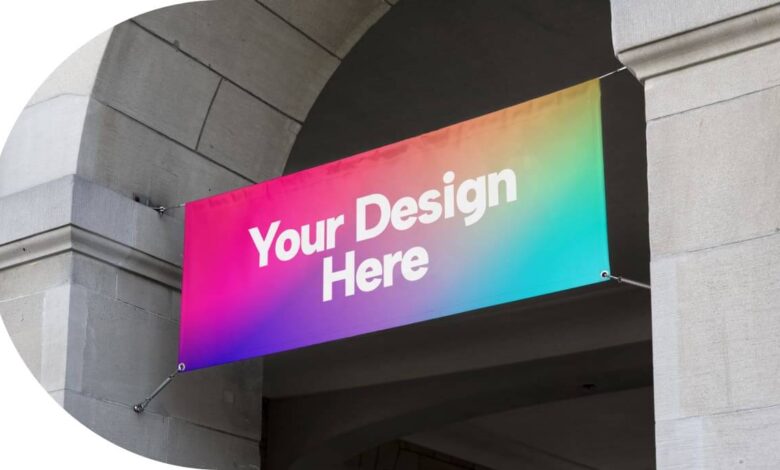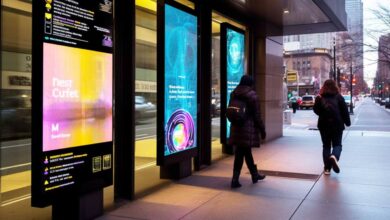How to Choose the Right Material for Your Outdoor Banner

Outdoor banners are a powerful way to capture attention and communicate your message in public spaces. Whether you’re promoting an event, advertising a business, or making an announcement, selecting the right material is crucial to ensure your banner withstands the elements and remains vibrant. With so many options available, how do you know which material is the best fit for your needs? In this guide, we’ll explore the key factors to consider when choosing the perfect material for your outdoor banner.
Understanding the Basics of Outdoor Banner Materials
Before diving into specific materials, it’s essential to understand the unique challenges that outdoor banners face. Exposure to sun, wind, rain, and even snow can quickly wear down a poorly chosen material. To ensure durability and longevity, it’s important to select a material that matches your specific application. When searching for the best banners Calgary, consider these factors:
- Weather Resistance: Choose a material that can withstand your local climate, whether it’s heavy rain, strong winds, or direct sunlight.
- Print Quality: The material should support high-resolution printing to keep your design crisp and clear.
- Durability: Consider how long you need the banner to last. Temporary banners might not need the same strength as long-term displays.
- Portability: Some materials are more lightweight and portable, making them easier to transport and install.
Top Materials for Outdoor Banners
Choosing the right material starts with understanding the strengths and weaknesses of each option. Here are the most popular outdoor banner materials and their unique advantages.
Vinyl Banners: The Industry Standard
Vinyl is by far the most common material for outdoor banners due to its durability and versatility. Typically made from PVC, vinyl banners can withstand harsh weather conditions, including rain, wind, and UV exposure. They are also compatible with vibrant, high-resolution printing, making them ideal for promotional displays.
Pros:
- Water-resistant and weatherproof
- Long-lasting and durable
- Ideal for high-quality printing
- Can be finished with hems and grommets for easy hanging
Cons:
- Heavier compared to fabric banners
- Can be prone to tearing in extremely high winds
Mesh Banners: The Wind-Resistant Choice
If your banner will be placed in a windy location, mesh banners are an excellent choice. Made from perforated vinyl, these banners allow wind to pass through, reducing the risk of damage. This quality makes mesh banners perfect for outdoor fences, construction sites, and large event displays.
Pros:
- Great for windy areas
- Lightweight and easy to install
- Print visibility is maintained despite perforation
Cons:
- Slightly lower image quality due to mesh pattern
- Not suitable for intricate designs
Fabric Banners: A Lightweight Alternative
Fabric banners, often made from polyester or synthetic blends, offer a softer and more elegant appearance. These banners are ideal for events where a professional, refined look is required. While they are less weather-resistant than vinyl, fabric banners can still be used outdoors if properly treated.
Pros:
- Lightweight and easy to transport
- Soft texture gives a professional appearance
- Eco-friendly options available
Cons:
- Less durable in harsh weather
- Prone to fading and tearing
Canvas Banners: The Artistic Option
Canvas banners offer a textured, artistic look that works well for decorative displays or artistic promotions. While not as rugged as vinyl, they can still be used outdoors if coated with weather-resistant treatments.
Pros:
- High-quality, textured finish
- Suitable for artistic and high-end applications
Cons:
- More expensive than vinyl
- Requires treatment for outdoor use
Factors to Consider When Choosing Your Banner Material
To make the right choice, consider the following factors:
Location and Weather Conditions
Evaluate where your banner will be displayed and the environmental conditions it will face. For example, if you’re installing your banner on a fence in a windy area, a mesh banner will perform better than a vinyl one.
Duration of Use
Short-term banners for events or promotions may not require the durability of long-term installations. Vinyl and mesh are ideal for extended use, while fabric may be suitable for temporary setups.
Printing Requirements
Consider the design complexity and color vibrancy you need. Vinyl offers the best print quality, while mesh can slightly compromise image resolution. Fabric works well for simple, elegant designs.
Budget Constraints
Vinyl banners are cost-effective for most outdoor applications, while fabric and canvas can be pricier. Balance your budget with your material needs to get the best value.
Customizing Your Outdoor Banner
Customization options, such as hemming, grommets, and pole pockets, can enhance the functionality and presentation of your banner. For windy conditions, reinforced hems are recommended. Pole pockets are ideal for banners mounted on poles or stands.
Maintenance Tips for Longevity
To keep your banner looking its best, follow these maintenance tips:
- Regular Cleaning: Gently clean your banner with mild soap and water to remove dirt and debris.
- Proper Storage: When not in use, store your banner in a cool, dry place to prevent mold and mildew.
- Inspect for Damage: Regularly check for tears or fading, and address issues promptly to prolong the banner’s lifespan.
Conclusion
Choosing the right material for your outdoor banner can make a significant difference in its durability, appearance, and overall effectiveness. By understanding the unique properties of each material and considering your specific needs, you can select a banner that performs well and looks great in any outdoor setting. Whether you need a durable vinyl banner, a wind-resistant mesh option, or a stylish fabric display, finding the right fit is essential for making a lasting impression.




